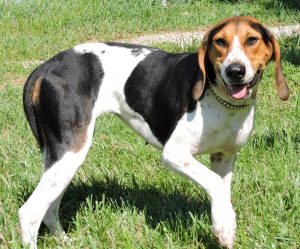
In our last blog post, we talked about the body language of cats. Dogs also communicate through their body language. Paying attention to these cues can help you to better understand what your dog is experiencing and help you respond in an appropriate way.
Tail – The position and movement of a dog’s tail provides many clues to how they are feeling. A relaxed dog will usually have its tail in a neutral or horizontal position, while a dog that is excited, alert, focused, or confident will have its tail in a higher position. If a dog’s tail is low or tucked under their body, it usually means that the dog is fearful or anxious. Rapid wagging of the tail usually means that the dog is excited or curious, whereas slow movement can indicate confusion or lack of confidence. If the dog’s tail is held still and tense, it can indicate intense focus or even aggression.
Ears – Although dogs’ ears can be very different from breed to breed, their position and movement still provide a lot of information. A relaxed, happy dog will have ears up or neutral. As a dog becomes more alert and focused, its ears will move forward. A dog that is fearful or aggressive will have its ears laid back close to the head.
Mouth – If a dog pulls back his lips and displays his teeth, that is a warning that you should not approach. Panting, excessive yawning, or lip licking, is an indication that your dog may be feeling a lot of stress.

Stance – Dogs that are being playful tend to have loose bodies and move around a lot. Those that are disinterested in playing tend to be stiff and will move away, and might engage in sniffing or scratching. Aggressive dogs try to make themselves look bigger by raising their hackles or leaning forward, whereas fearful dogs will try to make themselves look smaller by leaning back or lying on the ground.
You should also always approach any unknown dog with caution. Take into account all aspects of the dog’s body and behavior. If the dog is with his owner, always ask permission before approaching or petting. That way, you increase the safety of both you and the dog.
Dogs will do their best to communicate with you and if you pay attention to the clues, you may be able to understand what they are saying and the bond you share will only get stronger.
